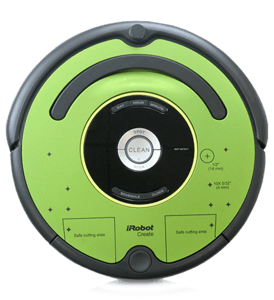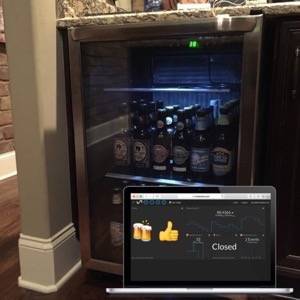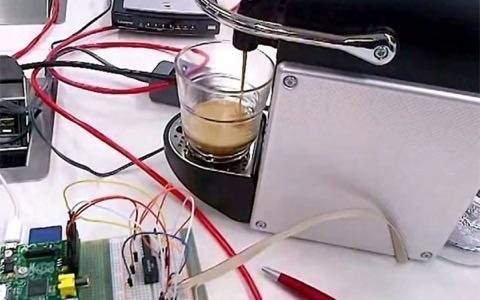You might have seen last week’s PR disaster by IBM, which launched the #HackAHairDryer campaign to encourage women to get into tech. It was overwhelmingly criticized by women in STEM (science, technology, engineering and math) for perpetuating that notion that women aren’t interested in science, unless beauty and femininity are involved. The campaign was swiftly pulled with an apology.

Still, the act of hacking everyday products to serve another purpose, in and of itself, is commendable. Think of the notion of “upcycling,” which can reduce waste and save money. It’s a popular trend now, and although it may not be new, opportunities for innovation seem more abundant than ever. The only limitation is your own imagination.
Raspberry Pi and Arduino have bought home-hacking to the masses, and there are thousands of forums, tutorials, videos and online projects that can get you tinkering. For beginners and those in apartments (sans tool sheds), try a local hacker space to learn how to disassemble appliances and use equipment safety. It’s also a great way to meet a tribe of people with similar passions.
Here’s some of the best household hacks using simple home appliances. Some will solve a problem and make your life easier, while others may simply amuse or delight.
Talking Toaster
Have you got a toaster that’s warmed its last bagel? If you hate waste, try combining it with a Raspberry Pi, a speaker, amplifier and motion detector, as Jezra has done. When his toaster detects motion, it plays an audio clip. It also has a web API for accepting strings of spoken text via the espeak TTS engine.
Press a button on the toaster, and—flashing an LED and sending API commands to Jezra’s stereo—it queues an Iron Maiden song. Learn how to make your very own here.
Go Beyond Vacuuming

iRobot’s Roomba vacuum cleaner is ripe for hacking, thank to its advanced robotics. Since its early days, these vacuums have attracted hackers, who have created everything from simulated laser scanning to a writing robot, as well as corresponding robotic apps and devices that can use webcams and offer telepresence when the owner is away.
The company even released robots explicitly designed for hobbyist and educational robotics experimenters. It’s the ultimate excuse to avoid cleaning your house.
Create An Automated Beer Fridge

There’s nothing worse than running out of booze, especially with the festive season in full swing. What if your fridge could tell you how many bottles are in it, when the door is open or closed, and what the temperature is inside your fridge?
The Internet of Things makes this possible, with the information accessible at all times on your laptop, tablet and phone. Check it out over here.
Create A Solar Controller To Power Home Devices
Markus Löffler created the UNplug controller as a way to go solar without being a homeowner with solar panels.
During the day the UNplug feeds electricity from the solar panel into the appliances connected to it, and charges the battery bank. Then when the sun goes down, it seamlessly switches those devices over to grid power. In the event of a blackout, UNplug then powers those same appliances from the battery bank, to satisfy critical electricity needs during an outage.
It is modular, scalable, moveable and connects any inverter, battery, charge controller, solar panel, for up to 1500W continuous power. Want to make your own? Head over here.
Christmas Twitter Tree Lights

This is a great project, if you’re feeling “bah humbug” about Christmas. The RGB LED Christmas tree lights could put anyone in a holiday mood.
The lights, controlled by a Raspberry Pi, reflects Twitter’s feelings about Christmas. When Barney, its creator, discovered that Stanford University’s Natural Language Processing Group released the source and data for its sentiment analyser, he decided to combine this with LED Christmas lights to tweet about Christmas.
The tweets come in from the Twitter streaming API (filtering for “christmas” and “xmas”) and get cleaned up—with @usernames removed, hashes eliminated from hashtags, and URLs deleted. Then a desktop computer runs four instances of sentiment analysis on the tweets. The system selects messages, processes and queues them up.
The code on the Pi reads from the queue, and shifts an LED on to the chain with a color based on the initial sentiment letter: red for negative, green for positive, white for neutral, bright cyan for very positive and bright orange for very negative. While it may not be a perfectly accurate assessment of sentiment or opinion, at least the result is a pretty light display, making for a lovely Twitter of Christmas.
Beet Box

The BeetBox is an instrument that creates drum beats when the beets are touched. It is powered by a Raspberry Pi with a capacitive touch sensor and an audio amplifier in a handmade wooden enclosure. Source code and instructions for the BeetBox are viewable on GitHub.
Automatic Cat Feeder

Going away for the holidays and need to feed your pets? You might like an automatic food dispenser, courtesy of this tutorial. The hack combines a Raspberry Pi, a couple of continuous-rotation servos and a commercial cat feeder to make sure Fluffy stays well-fed.
Voice Activated Coffee Machine

Developer Sascha Wolter modified his coffee machine with a Raspberry Pi, running Java to respond to voice cues, which trigger the machine to switch off and on.
While it won’t froth the milk—or, more importantly, bring you coffee in bed—it could be the start of something far beyond the humble teasmade.
Automate Your Home Or Workplace
You might have heard the story of “The Lazy Programmer,” whose workplace hacks on Github were discovered after he left for another company. He was described as the “type of guy that if something—anything—requires more than 90 seconds of his time, he writes a script to automate that.”
One script sent a text message “late at work” to his wife and “automatically picked reasons” from a preset list, to be sent anytime there was activity with his login on the company’s computer servers after 9 p.m. Another script was created to deal with an annoying customer. It scanned his inbox for an email from the person that used words like “help,” “trouble,” and “sorry,” then automatically rolled the guy’s database to the latest backup, with an automated reply: “No worries mate, be careful next time.”
Among his most celebrated scripts was one that waited 17 seconds, then hacked into the coffee machine and ordered it to brew a latte. The script told the machine to wait another 24 seconds before pouring the latte into a cup, the exact time it took to walk from the Lazy Guy’s desk to the coffee machine. You can enjoy the scripts on Github at your leisure.
Although this article focused primarily on hacking with Arduino and Raspberry Pi, I’d be remiss to fail to mention other systems and microcomputers, like Beaglebone and Intel’s Galileo, which are pretty innovative in their own right. I’d love to hear of any household hacks you’ve produced, especially if you’ve created a tutorial.










